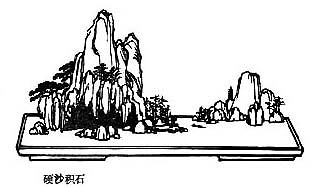孫
子
兵
法
Sun Zi 
 – The Art of War
– The Art of War
Chinese strategy explained : know yourself and the ennemy, use deception, spies, and "win with ease". Tr. Giles (en, annotated) and Amiot (fr).
Laying Plans
Ts`ao Kung, in defining the meaning of the Chinese for the title of this chapter, says it refers to the deliberations in the temple selected by the general for his temporary use, or as we should say, in his tent. See. ss. 26.
Sunzi I. 12.
Hold out baits to entice the enemy. Feign disorder, and crush him.1
If he is secure at all points, be prepared for him. If he is in superior strength, evade him.
If your opponent is of choleric temper, seek to irritate him. Pretend to be weak, that he may grow arrogant.2
If he is taking his ease, give him no rest.3 If his forces are united, separate them.4
Attack him where he is unprepared, appear where you are not expected.
These military devices, leading to victory, must not be divulged beforehand.
Giles I.20-25.
Hâtez vos préparatifs lorsque vos adversaires se concentrent ; là où ils sont puissants, évitez-les. Plongez l'adversaire dans d'inextricables épreuves et prolongez son épuisement en vous tenant à distance ; veillez à fortifier vos alliances au-dehors, et à affermir vos positions au-dedans par une politique de soldats-paysans. Quel regret que de tout risquer en un seul combat, en négligeant la stratégie victorieuse, et faire dépendre le sort de vos armes d'une unique bataille ! Lorsque l'ennemi est uni, divisez-le ; et attaquez là où il n'est point préparé, en surgissant lorsqu'il ne vous attend point. Telles sont les clefs stratégiques de la victoire, mais prenez garde de ne point les engager par avance.
Amiot

The Art of War – Sun Zi I. 12. – Chinese on/off – Français/English
Alias Sun Tzu, Sun Wu, Sun Tse, Sunzi Bingfa, Souen Tseu, Souen Wou, 孫武.
The Book of Odes, The Analects, Great Learning, Doctrine of the Mean, Three-characters book, The Book of Changes, The Way and its Power, 300 Tang Poems, The Art of War, Thirty-Six Strategies
Welcome, help, notes, introduction, table.
Index – Contact – Top
